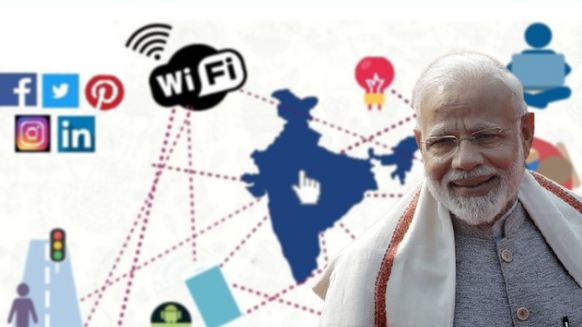- The third industrial revolution, which started in the United States, seems to be adopted and led by India in the 21st century.
- In FY 21, 169 million (16.9 crores) Smartphones were shipped in India, with 50% per cent of market share being occupied by 10-20 thousand range, 30% in 5-10 thousand rupees range, 10% in 20-30 thousand range and 10 per cent above 30 thousand range.
- The country has the world’s cheapest data rate and data consumption is going through the roof. 1 GB data costs around $0.1 dollars in India, while in some countries the consumption of the same zeros and ones costs as much as $20.
The Digital Revolution (also known as The Third Industrial Revolution) started in the United States in the latter half of the 20th century. The first industrial revolution, which started in Britain, made the country a global leader and the second industrial revolution established the United States as a global hegemony.
However, the third industrial revolution, which started in the United States, seems to be adopted and led by India in the 21st century. Although the United States is still the global leader in digital technology, India has occupied a significant component.
First, the country practically monopolized the Information Technology and Business Process Outsourcing (IT & BPO) industry and now it is overtaking the countries in Internet-related technologies by storm.
Global #smartphone sales market share numbers for CY 2021 are here.@SamsungMobile remains #1@Apple sold the most number of iPhones in a year@Xiaomi entered the top 3 list@oppo and @vivo grew rapidly
Source: Counterpoint Research Market Pulse Service https://t.co/b2olR5eRVA pic.twitter.com/pZQP6W4kq9
— Jan Stryjak (@JStryjak) January 19, 2022
In FY 21, 169 million (16.9 crores) Smartphones were shipped in India, with 50% per cent of market share being occupied by 10-20 thousand range, 30% in 5-10 thousand rupees range, 10% in 20-30 thousand range and 10 per cent above 30 thousand range. The country has the world’s cheapest data rate and data consumption is going through the roof. 1 GB data costs around $0.1 dollars in India, while in some countries the consumption of the same zeros and ones costs as much as $20.
“Today we have 1.18 billion mobile connections, 700 million Internet users, and 600 million smartphones, which are increasing 25 million per quarter. We have a strong connectivity base today,” Ram Sewak Sharma, chief executive of the National Health Authority of India said, adding that India has the highest data consumption which is about 12 GB per person a month.
He added, “Fortunately, in our country, in the last 6-7 years, we have seen immense progress in the connectivity side. Some of the Digital India programmes envisaged by Prime Minister would materialise while many of them such as Unified Payments Interface (UPI), Aadhar and CoWin has already transformed the lives of people.”
Thanks to India’s digital infrastructure, a whole new range of services are being offered on top of this. From exponential growth of e-commerce and digital payments, to now next generation of services like flow-based lending, and healthcare consultation.
India ran the world’s smoothest vaccination program at very competitive rates thanks to Aadhar and Digital Infrastructure. The Infrastructure for the first industrial revolution were railways, steam engines, spinning jenny and for the second industrial revolution, it was electricity and mass production.
For the first industrial revolution, the United Kingdom had the best infrastructure and raw material (availability of coal) and for the second industrial revolution, the United States had the best infrastructure. To harness the third industrial revolution, India has prepared the best infrastructure (Digital Infrastructure) through smartphone penetration, cheap data rates, IndiaStack (Aadhar, e-KYC, UPI, Digilocker), Healthstack (Public Health Registry, Digital consultation), Open Commerce Enablement Network (OCEN) and so on.
On top of this infrastructure will emerge the next generation of companies of the country. India is also making renewed efforts to dominate the clean and renewable energy wave and biotechnology revolution.
In biotechnology, India is already competing with top nations like the United States and China and in green industries, India’s top conglomerates (Ambani and Adani) are making a grand entry. India is set to lead the world in the next generation of the industrial revolution.
